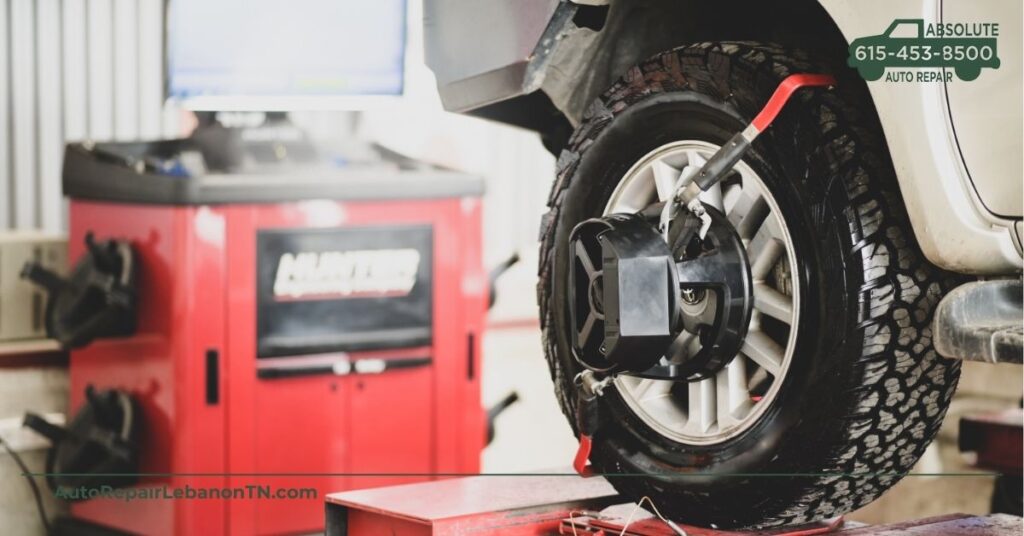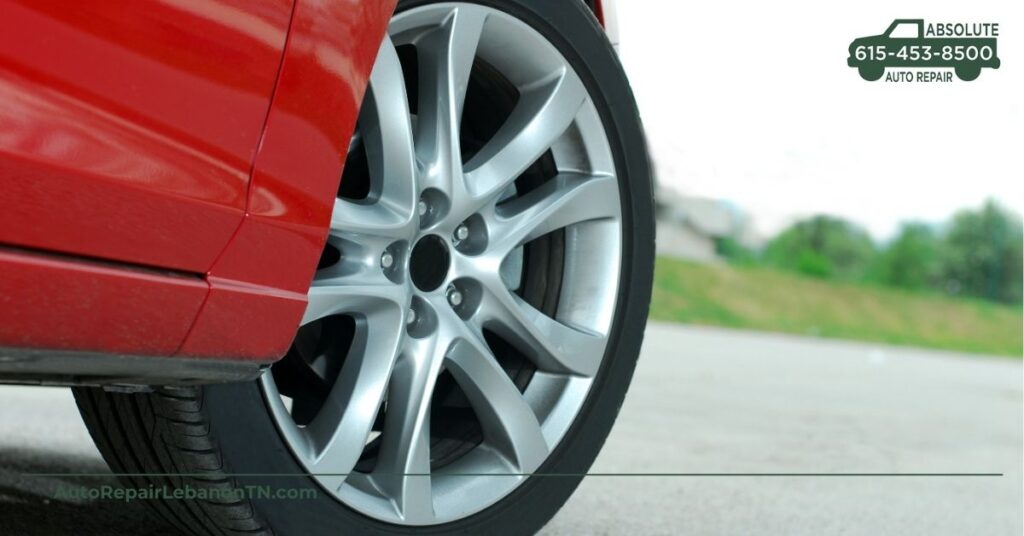When it comes to your car, the wheels are more than just round pieces of rubber—they’re the unsung heroes of your driving experience. Understanding the parts of a car wheel can enhance your appreciation for this essential component and even help you make informed decisions when it comes to maintenance and upgrades.
From the tire that grips the road to the rim that holds everything together, each part plays a crucial role in ensuring your safety and performance. So whether you’re a car enthusiast or just someone looking to keep your ride in top shape, diving into the details of your wheels will empower you to drive with confidence. Ready to roll? Let’s explore the intriguing area of car wheel parts.
Overview Of Car Wheels

Car wheels consist of multiple components that work together to ensure efficiency and performance. Each part plays a vital role in the vehicle’s functionality.
The tire provides traction, stability, and insulation against road surface irregularities. It acts as the connection between your car and the road, influencing handling and ride quality.
Next, the rim, also referred to as the wheel itself, supports the tire. It determines the tire’s fit and accommodates different sizes. A well-fitted rim enhances safety, reduces the risk of tire blowouts, and improves overall driving experience.
Several other components contribute to the wheel’s performance. The valve stem allows for inflation and deflation, while the lug nuts secure the wheel to the hub. Properly tightened lug nuts prevent the wheel from loosening during operation, promoting safety.
Finally, the hub contains bearings that enable smooth rotation. A well-maintained hub ensures less friction and heat build-up. Understanding these parts helps you appreciate how they contribute to your car’s performance on the road.
Essential Parts Of A Car Wheel

A car wheel comprises several key components that work together to ensure optimal performance and safety. Understanding these parts enhances your appreciation for their functions and their impact on your driving experience.
Rim
The rim serves as the outer edge of the wheel, where the tire mounts. This part forms an airtight seal with the tire beads, securing the tire in place effectively. Made from aluminum or steel, rims offer both lightweight properties and durability. When damaged, rims can affect your vehicle’s performance, as they absorb initial impacts from bumps or potholes. Ensuring your rims stay in good condition contributes to overall safety and control while driving.
Tire
The tire wraps around the rim and plays a vital role in your vehicle’s handling. Composed mostly of rubber and synthetic materials, tires provide essential cushioning for the vehicle’s weight. They also control traction with the road surface, crucial for maintaining stability. Various sizes, brands, and designs of tires exist, so proper air pressure maintenance is essential for optimal functionality. Ensuring your tires are well-maintained can significantly enhance your driving experience and safety.
Hub
The hub acts as the central part of the wheel, housing the bearings that allow smooth rotation. This component connects the wheel to the rest of the vehicle, facilitating efficient movement. Hubs play a crucial role in supporting the overall weight of the car. Regular inspection of the hub and bearings ensures smooth performance and helps prevent potential mechanical failures. Maintaining the hub contributes to a safer and more reliable driving experience.
Supporting Components

Supporting components play a vital role in ensuring that your car wheels function properly. They contribute directly to safety and performance, so understanding these elements is crucial.
Lug Nuts
Lug nuts secure the wheel to your vehicle, preventing it from loosening during operation. Fastening onto the wheel studs, they ensure the wheel stays firmly in place while you drive. Most vehicles use six or five lug nuts per wheel, depending on the design. The torque specification for these nuts varies by vehicle, but proper tightening is essential to avoid wheel detachment.
Brake Components
Brake components are integral to your car wheel system. The hub houses critical elements like brake pads, calipers, and rotors, all contributing to effective braking. Brake pads create friction against the rotors when you apply the brakes, slowing down your vehicle. Calipers, responsible for clamping the brake pads against the rotors, help translate your foot’s movement on the brake pedal into stopping power. Regular inspection of these brake components can prevent premature wear and ensure a safe driving experience.
Wheel Maintenance Tips

Regular maintenance of your car wheels ensures safety and enhances performance. Check tire pressure monthly to maintain optimal traction and prevent uneven wear. A properly inflated tire improves fuel efficiency and adds to your comfort while driving.
Inspect the treads of your tires for wear, looking for signs of unevenness or balding. Replacing tires with low tread depth under 2/32 inches is essential for maintaining grip on wet or slippery roads. Consider using the penny test, inserting a penny into the tread groove. If you see all of Lincoln’s head, it’s time to replace your tires.
Rotate your tires every 5,000 to 7,500 miles for even wear. Changing the position of the tires promotes balanced wear patterns and extends their lifespan. Don’t neglect the wheel alignment; perform it annually or when you notice steering issues or tire wear.
Keep an eye on lug nuts, ensuring they’re tight to prevent wheel detachment while driving. Using a torque wrench provides the correct tension. Also, inspect the hub for grease, as it supports smooth rotation and distributes weight effectively.
Cleaning your rim and hub regularly removes brake dust and road grime, which can affect performance. Use a mild detergent and a soft brush to maintain their appearance and functionality. Check the valve stem for cracks or leaks, which may require replacement if damaged.
Inspect your hubcaps or wheel covers for cracks or deformation, and replace them if they’re not fitting properly. Lifting the vehicle periodically allows you to check for rust or corrosion on the wheel studs. Address any issues promptly to ensure continued safety and performance.
Conclusion
Understanding the parts of a car wheel is vital for your safety and driving experience. Each component plays a important role in performance and stability. By maintaining your wheels properly you can enhance not just the longevity of your tires but also the overall safety of your vehicle.
Regular inspections and maintenance are key to preventing issues that could lead to costly repairs or dangerous situations. Whether it’s checking tire pressure or ensuring lug nuts are secure staying proactive will keep your wheels in top shape. Remember that a well-maintained wheel system contributes to a smoother ride and better handling on the road. Prioritizing this aspect of vehicle care will eventually lead to a more enjoyable driving experience.
Frequently Asked Questions
What is the main purpose of car wheels?
Car wheels are essential for driving, impacting safety and performance. They provide traction, stability, and absorb shocks from road irregularities, making them crucial for an enjoyable driving experience.
What are the key components of a car wheel?
The main components of a car wheel include the tire, rim, hub, valve stem, and lug nuts. Each part plays a vital role in safety, performance, and secure attachment to the vehicle.
Why is tire maintenance important?
Maintaining proper tire pressure ensures safety and enhances performance. Well-maintained tires improve traction and stability, while avoiding low tread depth prevents blowouts and promotes safe driving.
How often should I inspect my car wheels?
It’s advisable to inspect your car wheels monthly. Check tire pressure, inspect for tread wear, and ensure lug nuts are tight. Regular maintenance boosts safety and prolongs tire life.
When should I rotate my tires?
You should rotate your tires every 5,000 to 7,500 miles. This practice promotes balanced wear and extends tire lifespan, ensuring better performance and safety on the road.
What is the function of lug nuts?
Lug nuts secure the wheel to the vehicle, preventing loosening during operation. Proper tightening of lug nuts is critical to avoid wheel detachment while driving.
What does the hub do in a car wheel?
The hub connects the wheel to the vehicle, houses bearings for smooth rotation, and supports the wheel’s weight. It plays a crucial role in overall vehicle performance and safety.
How can I clean my car wheels effectively?
To clean your car wheels, use a soft brush or cloth with suitable cleaner to remove brake dust and grime. Regular cleaning helps maintain wheel integrity and appearance, enhancing safety.
What should I check regarding the valve stem?
Inspect the valve stem for any signs of damage or wear, as it enables tire inflation. A faulty valve stem can lead to air leaks, affecting tire pressure and overall safety.
Why is it important to inspect the hub regularly?
Regular inspection of the hub is essential to ensure the bearings are well-lubricated and in good condition. This prevents mechanical failures and enhances the overall safety and performance of your vehicle.

